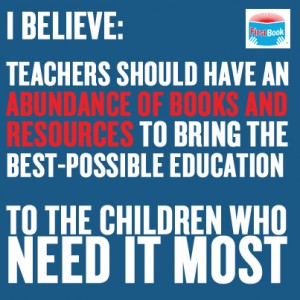Viewing: Blog Posts Tagged with: teachers, Most Recent at Top [Help]
Results 26 - 50 of 259
Blog: Barbara O'Connor (Login to Add to MyJacketFlap)
JacketFlap tags: Teachers, Giveaway, Add a tag
Blog: Miss Marple's Musings (Login to Add to MyJacketFlap)
JacketFlap tags: pets, picture books, cats, teachers, tigers, Valeri Gorbachev, Perfect Picture Book Friday, Cats are Cats, Add a tag
Title: Cats Are Cats Written and illustrated by: Valeri Gorbachev Published By: Holiday House, 2014. Themes/Topics: cats, pets, tigers, fish Suitable for ages: 3-5 Opening: … Continue reading
Add a CommentBlog: Sharon Ledwith: I came. I saw. I wrote. (Login to Add to MyJacketFlap)
JacketFlap tags: Librarians, Parents, Teachers, Middle Grade Books, Kindle giveaway, Rafflecopter giveaway, Middle Grade Authors, Emblazon, Tween Literature, Add a tag
Attention teachers, librarians, tweens, and parents of tweens! Announcing a contest just for you... The Emblazon authors are giving away a brand new touch screen Kindle loaded with over 50 of their books. That’s a $300 value and hours of reading entertainment! Emblazon is a collection of authors who seek to create lifelong readers by creating top-notch literature for kids. They have a particular focus on ages 11 to 14. They’re hosting this fabulous giveaway to celebrate their first year and to treat you, the readers. The Rafflecopter contest runs November 3 through November 17 and is open to anyone who loves tween literature. a Rafflecopter giveaway Note: Signing up for the catalog is required for entry. Current subscribers are also eligible for entry. Winners must reside in the United States or Canada.
November 3rd:
You can help even more by sharing this post with your friends and family. If you know teachers or librarians let them know about how awesome the Emblazoners are by sharing the link to their website: http://emblazoners.com/
Blog: First Book (Login to Add to MyJacketFlap)
JacketFlap tags: books, reading, Literacy, school, Books & Reading, Education, students, Teachers, First Book, Book Distributions, high school, teacher, Indiana, Back to School, First Day, Guest Blog Posts, Success Stories, Indianapolis, National Book Bank, First Day First Book, Impact Stories, stories worth sharing, 9th grade, Add a tag
Today’s guest blogger, Sarah Kilway, wrote to us after receiving hundreds of new books for her students. We couldn’t resist sharing her story with you.
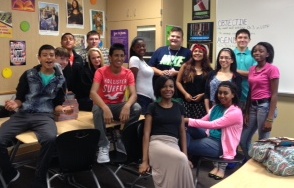 I teach 187 kids at Ben Davis Ninth Grade Center in Indianapolis, IN. The majority of my students live in poverty. Most have only one parent at home.
I teach 187 kids at Ben Davis Ninth Grade Center in Indianapolis, IN. The majority of my students live in poverty. Most have only one parent at home.
Not many of my kids own books, nor were they read to as children. Even as 9th graders, they lack basic common knowledge of fairy tales, fables and iconic book characters.
Our school has many great resources, but when something is lacking, my colleagues and I step in. This often means spending my own money on books and other items for my students, but it’s totally worth it. I also have First Book.
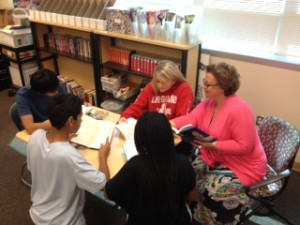 Thanks to First Book, I was recently able to give a new book to every single one of my students – all 187! A few told me it was the first book they’d ever owned. Some said it was the first book they have ever finished. Such a proud moment for me and them – one that I wanted to share with you.
Thanks to First Book, I was recently able to give a new book to every single one of my students – all 187! A few told me it was the first book they’d ever owned. Some said it was the first book they have ever finished. Such a proud moment for me and them – one that I wanted to share with you.
My students now ask me to go to the library on a daily basis.
The post 187 Reasons Why a Teacher Needs Books appeared first on First Book Blog.
Blog: Ken Baker: Children's Author (Login to Add to MyJacketFlap)
JacketFlap tags: writing tips, video, plot, teachers, lesson plan, author advice, Add a tag
Writing Instruction Video
Sometimes beginning writers struggle to engage and maintain the reader's interest in their stories. Sometimes this happens because the protagonist solves plot conflicts too easily or too early in the story. Sometimes it happens because the opposite occurs, that it seems to take forever for the hero to solve the problem. This video demonstrates a writing technique that helps writers strike just the right balance in order to raise plot tension, thereby engaging and maintaining the reader's interest.For teachers interested in using this video as part of creative writing lessons, the instruction video along with slide handouts that can be used to review the raising tension technique can be found at www.kenbakerbooks.com/raising-plot-tension.html.
Blog: Ken Baker: Children's Author (Login to Add to MyJacketFlap)
JacketFlap tags: picture books, short stories, video, plot, teachers, lesson plan, Add a tag
Writing Instruction Video
As I have worked with various beginning picture book authors, a common problem that a lot of them run into is difficulty in conveying what their story is really about or going off in to many directions. Creative writing instructors in school may run into a similar problem when they assign students to write short stories. This writing instruction video on picture book plot addresses this issue.If you enjoyed or found this writing instruction video useful, please share it with others. Thanks.
Blog: First Book (Login to Add to MyJacketFlap)
JacketFlap tags: books, games, Books & Reading, read, teachers, Back to School, school supplies, First Book Marketplace, learn, calculators, First Day First Book, interactive learning tools, Add a tag
Yesterday marked the first day of school for many kids across the country. And from Sacramento to Savannah, classroom shelves were stocked and backpacks stuffed to the brim with brand new books from First Book.
For over 20 years, we’ve been in the fortunate position to help teachers get the books their students need to start school off strong. And this year is no different. In fact, we’re now offering more tools than ever before to help kids in need read, learn and succeed. In addition to books, our network of 130,000 educators and program leaders will also be able to access games, bookmarks, school supplies and interactive learning tools for the kids they serve.
Check out some of the cool new tools we’re offering on the First Book Marketplace – just in time for back to school:
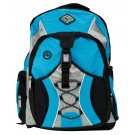 Backpacks
Backpacks
How else will kids carry all their great new books?
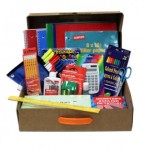 Kits for Kidz
Kits for Kidz
Notebooks, pencils, scissors, a ruler – these ready-made kits contain 30 essential items required for an entire school year. Available for primary, elementary and junior high school.
 Calculators
Calculators
Help kids stay on track during math class with brand new calculators. Scientific and pocket calculators available in carton or single quantities.
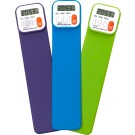 Mark-My-Time Digital Bookmarks
Mark-My-Time Digital Bookmarks
Vibrant digital bookmarks enable kids (and their caregivers) to track their reading time and feel a sense of accomplishment.
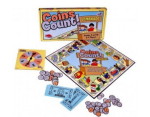 Coins Count!
Coins Count!
Coins Count! is a fun board game that helps kids make sense of money and learn the value of pennies, nickels, dimes, quarters, and dollar bills.
Bug Barn Kit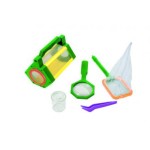
This fun viewing barn and tools helps lets do hands-on science explorations and take a closer look at the natural world.
Do you work with kids in need? Sign up with First Book today to access all these great learning resources.
The post More Than Books for Back to School appeared first on First Book Blog.
Blog: Jen Robinson (Login to Add to MyJacketFlap)
JacketFlap tags: Reviews, Young Adult, librarians, young adult fiction, Nonfiction, reader's advisory, teachers, Newsletter, realistic fiction, VOYA, reading guide, kelly jensen, Add a tag
Book: It Happens: A Guide to Contemporary Realistic Fiction for the YA Reader
Author: Kelly Jensen
Pages: 278
Age Range: Adult (reference title for librarians and others who do reader's advisory for teens)
I'm not quite the target audience for It Happens: A Guide to Contemporary Realistic Fiction for the YA Reader, but I've been following Kelly Jensen's blog for years, and I have a lot of respect for her knowledge of and advocacy for young adult fiction. So when she had a contest on her blog to win a copy of It Happens, I decided to enter. And I won! So now I'm here to tell you a bit about the book.
It Happens is a reference title for anyone who provides reader's advisory to teens, and wants to do better at recommending contemporary realistic fiction. As a blogger/reviewer, I do some of what Kelly calls "passive reader's advisory" (recommending titles, and discussing what interests a particular book might fall under). I can imagine doing more active reader's advisory (where you discuss a teen's interest with them and recommend specific titles) when my daughter and her friends are teenagers. In the meantime, I do a little of that with my nieces, friends who read YA, etc.
Anyway, this book is an excellent resource for anyone who wants to get the right books into the hands of teens, particularly librarians and teachers. It Happens is both a primer on HOW to get the right book into the right hands and a resource with suggestions for exactly what those books might be. In Part 1, Kelly defines realistic contemporary young adult fiction, discusses why this genre is both important and under-publicized, and provides some general resources (book awards, etc.) for discovering titles. She also proposes methods for evaluating and categorizing YA titles, and concludes with a detailed chapter on reader's advisory skills.
Here is Kelly's definition of contemporary YA, from the end of Chapter 1:
"Contemporary YA features young adult protagonists set in today's world incorporating today's issues, paralleling and intertwining with the values that every teen - and every reader - thinks about: family, friendship, growing up, loss, faith, the future, and many, many more." (Page 8)
She starts each chapter with a quote (some short, some long) from an author or a librarian or other gatekeeper. I found these quotations inspirational in many cases. Like this, from Lisa Schroeder:
"... But perhaps after closing the pages of a well-done contemporary YA novel, a teen will think: If she can make it through, I can, too." (Page 9)
That's why we're here, right? To find the books that can make a real different for kids. I also personally, as a member of the children's book blogging community, enjoyed seeing quotes from people whose blogs I've been reading for years, like Liz Burns and Sarah Gross. [Though I think it would have been helpful for readers less familiar with the community had at least the names of these people's blogs been included.]
As a reviewer, I found that Chapter 4, on methods for evaluating fiction, resonated, even though (or perhaps because) some of the topics were things that I have been thinking about for a long time. Here's what Kelly has to say about critical evaluation:
"Critical evaluation highlights the elements of a text that work well and those that don't work quite so well. All books have their strengths and their weaknesses, and while critical evaluation sounds like a way to tease out and emphasize only the parts that don't work, that's not the case. Exploring what does and does not work at the same time offers a thorough means for understanding not just the book at hand, but fiction more widely. (Page 27)
All in all, I enjoyed the first part of the book, and learned a bit about book genres and reader's advisory. But for me, where It Happens really shines is in Part 2. In this section, Kelly provides fifteen book "annotations" for each of ten separate topics, thus profiling 150 books in detail. Her selections are all relatively current titles (from the past 10 years), and do not include the obvious, huge print run titles, which people already know about.
Each annotation includes a cover image, a brief summary of the book, a link to the book's trailer, if available, and a list of "Appeal Factors" (e.g. "female main character", "moving", "deafness", etc.). The appeal factors are very useful (and an index of the factors is available at the end of the book). Kelly goes beyond the genres to get into real specifics, like books set in particular locations, books with people of color or non-traditional families, books about filmmaking or fishing, etc.
Below that, Kelly also includes a brief section on "Read Alikes" for each book. These Read Alikes were what impressed me the most about It Happens. Rather than just including a list of similar books, Kelly discusses just what it is about this book that might appeal to readers who liked some other title. And then she'll also discuss other books that might make a good follow-on read, and WHY. These references, these connections between the books, really showcase Kelly's deep knowledge of the field. I didn't read every annotation in detail, but I found the Read Alikes fascinating.
At the end of each chapter/topic, Kelly includes another list of related titles. Then, at the end of the book, she provides several chapters dedicated to books that are good conversations starters around specific issues like bullying and sexual assault. She discusses four or five books in detail for each topic. She gets into exactly what types of discussions a parent or teacher might launch based on having read each book. As the parent of a four year old girl, I'm hoping for an update of this section in about 8-10 years. But I'll keep this edition handy in any case.
I do wish that It Happens was available as a digital text. It would be lovely to be able to click through to read more about the additional titles listed at the end of each section, or to click on an "Appeal Factor" listed at the end of a book profile and immediately bring up all of the other books listed under that same appeal factor. But it's nice to have It Happens in printed form as a reference to keep on my bookshelf, too.
The very last chapter of It Happens is a call for readers of the book to advocate for contemporary YA fiction as a genre: to read extensively, and work hard to promote strong titles and get them into readers' hands. For example, Kelly suggests nominating strong contemporary YA titles for the YALSA and Cybils awards. [I, of course, especially appreciated several Cybils references throughout the book.] This is a positive note on which to leave readers, giving them strong next steps to take.
I will also admit that I found parts of the book a bit physically difficult to read. It Happens is an oversize paperback, and while the format works well for the chapters with book descriptions, it's not quite a comfortable fit to put the book on your lap and read the first section straight through. Also, this section includes quite a few text boxes, set aside from the main text. Some of the text boxes were excerpts of the main text, while others were supplemental. I found this a bit confusing. Visually, the text boxes keep the oversized book from appearing too dense in the non-booklist sections, but functionally, I thought that the ones that didn't provide new information would have been better left out. But that's the most critical thing I have to say in my evaluation of the book.
All in all, I think that It Happens is a useful resource for anyone who evaluates young adult fiction, including blogging reviewers like me. For those are true gatekeepers, out there in the trenches getting books into the hands of teens, it is essential. Highly recommended.
Publisher: VOYA Press (@VOYAMagazine)
Publication Date: August 15, 2014
Source of Book: Won from the author in a raffle
FTC Required Disclosure:
This site is an Amazon affiliate, and purchases made through Amazon links (including linked book covers) may result in my receiving a small commission (at no additional cost to you).
© 2014 by Jennifer Robinson of Jen Robinson's Book Page. All rights reserved. You can also follow me @JensBookPage or at my Growing Bookworms page on Facebook.
Blog: YALSA - Young Adult Library Services Association (Login to Add to MyJacketFlap)
JacketFlap tags: teachers, high school, Teen Blogger, Summer Reading, 30 Days of Back to School, Add a tag
Heading into my final year of high school, I realize I have much to look forward to. I’ll be (hopefully) passing my driver’s test in a week and, in addition, have my own car for the year. I’ll be taking many anticipated, higher-level courses that I’ve been thinking about since I was a freshman. I’ll be a leader in many of the clubs and activities I’ve been in for the last three years. Yet, despite all these grand new beginnings to kick off my new year, I know that there is also one grand ending: summer reading.
Having taking honors/AP English for all four years, a part of my summer has always belonged to the written word. Though there are novels I willingly pick up on my own when the warm months roll in, I can’t attest to having always been enthralled by the books handpicked for me. When I first heard about summer reading from my twin sisters, who were just heading into ninth grade at the time, I was appalled. Isn’t summertime designed for children to relax? I argued. To take a break from books and education? Of course, I’d watched movies with characters that had summer reading and even, ironically, read books with this same act of atrocity. But I never thought that I, a measly eighth-grader, would have to suffer through it. It wasn’t even that I hated the idea of reading; as I stated before, I willingly pick up books, quite often in fact. It was more the idea that I would have to read a book that someone else wanted me to read. It was the idea that I couldn’t choose what I wanted to read.
So, in the summer bridging middle school to high school, I begrudgingly opened the letter declaring the books I would have to read that summer. A Separate Peace by John Knowles (which helped me properly learn how to spell separate) and Matched by Ally Condie. Imagine my surprise that Matched was a New York Times Bestselling novel for teenagers. I had been expecting Moby Dick (which would have been a repeat, considering I read sparknoted it in eighth grade) or The Scarlett Letter (that, actually, would come later). A Separate Peace fell into my more expected category of summer reading, but imagine my surprise again as I enjoyed that novel even more than Matched.
Matched—for those of you who haven’t read it—is about a girl living in a world where the government controls her every decision. It’s about choices, really. Choices we have, choices we don’t. It was a very fitting book at the time, looking back on it. Cassia, the main character, feels like she has no choice in her life, and I felt like I had no choice in what book to read. I now know that summer reading is put into place so that reading levels don’t sharply decline, but for those of us who do choose to read, I realize that, just because you have the freedom to make a choice doesn’t mean you will pick the right choice. That’s not to say that teachers and librarians always pick the perfect novels for us to read. Perhaps, however, giving in to reading a novel that we would never pick up ourselves but holds high acclaim for another person is a choice we should be willing to make. Even when it’s not for a classroom, where the books are often connected to a predetermined syllabus, we should be open to other book options from different people, even book critics.
With this new mindset, I approached my sophomore summer reading with open arms (well, okay, slightly less closed arms). Imagine my disgust when the book fell right into my literary summer reading stereotype—The Once and Future King, by T.H. White, was exactly the sort of novel I was afraid of reading. Long and tedious, often dwelling on the most mundane of things, not spending enough time on the most interesting things. I’ll admit, at first I was intrigued. The oldest fantasy of all, before Harry Potter and Twilight ever even had their first word. Merlin, Arthur, the Knights of the Round Table: every common fantasy element started with this very book. What failed me about this age-old story was that, when I finished the last word, there was nothing to take away—no message, no theme. Sparknotes puts up a good argument for chivalry, but is that a message I want a book to leave me with? Chivalry?
I know it’s a classic and I swear I’m not one of those teenagers who tears down classic novels for the sake of tearing down classic novels (I’ll only do that with other teenagers in my presence). And I have certainly read my share of novels that have no basis of a theme whatsoever. But I must admit that I found it rather odd that a book I had to read for education taught me nothing more than about crazy old wizards and unicorns. Perhaps on my own time, yet when I have to type twenty pages of notes (twenty-one, actually) I’d like to read a book with more substance. Even if it is deemed a classic by whomever the classic-deemers are, is it too much to ask for a novel that leaves a classic impression on my education?
The summer of my junior year (a summer I barely made after narrowly surviving Sophomore Lit), this very question was answered. And they say that there are no wrong answers, but my goodness was this question answered wrongly. The novel Pilgrim at Tinker Creek by Annie Dillard won the 1975 Pulitzer Prize for nonfiction. That’s more accomplishment that I can say for myself, so who am I to tear down the novel? Well, before I do, let me first put it on a pedestal. I’m not lying when I say this novel did leave me with more substance than The Once and Future King allowed: there were observations Dillard wrote about in her book that were so spot on, so enlightening, I can’t help but to believe she must have been the only true competition for that 1975 Pulitzer Prize. What truly failed me about this book was that there were no characters and no story. I know it is nonfiction. I know that no nonfiction novel contains any sort of story or characters like the ones we fiction-lovers hold dear. But I didn’t even get a name. At least there’s Abraham Lincoln, Steve Jobs, even E. Coli (Biology textbook anyone?). Nonfiction novels may not have the same level of familiarity as fiction does, but at the very least I would like to know a name. When I read a book, I need some sort of connection. My physics textbook always feeds me words and definitions; Annie Dillard’s novel was a far cry from thermodynamics and nuclear physics. In fact, it did feel more fiction than anything. Could it have been so hard to have introduced herself to the audience?
And then there’s this summer. This final summer before my summer reading ends for good. The two books I am currently reading—The Help by Kathryn Stockett and And the Mountains Echoed by Khaled Hosseini—are exactly what I always hoped for. I would have picked them up by choice, the messages (notice the extra s there on the end) are profound and deep, the stories and characters are engaging and real. It’s no wonder they are both bestselling novels. Not every great novel is a bestseller though, and being a bestseller is hardly a measure of a great novel. Here I am easily ready to judge any book thrown my way, yet I have never had the daunting task of picking out a novel for an entire class to read, learn from, and enjoy. And simply because I am reading, learning from, and enjoying The Help doesn’t mean the student sitting next to me will. What is the formula for a perfect summer reading novel? Does it matter if the students enjoys it, so long as they read it and learn from it? Does it matter if they learn, so long as they are reading and enjoying? All three do make the perfect recipe, but it is rare for any novel, not simply a summer reading novel, to contain all the ingredients. I guess the only thing left to say is for any teacher or librarian or educator that chooses summer reading books—I commend you for being able to make such a tough choice every year.
Check out #bestseller, #summerreading, #summerreading2014
Blog: First Book (Login to Add to MyJacketFlap)
JacketFlap tags: Webster's, Literacy, Book lists, Books & Reading, Education, Teachers, Latino Literature, Guest Blog Posts, families and learning, Family Engagement, La Llorona, Pura Belpre, National Council of La Raza, Peggy McCloud, Add a tag
Welcome to First Book’s celebrity blog series. Each month we will be connecting with influential voices who share a belief in the power of literacy, and who have worked with First Book to curate a unique collection that inspires a love of reading and learning. All recommended books are available at deeply discounted prices on the First Book Marketplace to educators and programs serving children in need.
This month we hear from Peggy McCloud, Ed. D. the Deputy Vice President of Education and Workforce Development at the National Council of La Raza (NCLR) on engaging Latino families and children in reading and learning.
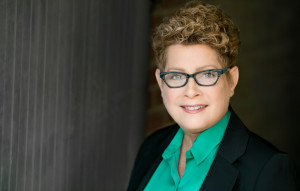 Any student who has parents that understand the journey from preschool to college is better equipped to navigate the road to long-term student success. While parent engagement is critical to increasing educational attainment for all children, engaging Latino parents in their children’s schooling has typically been challenging – often for linguistic and cultural reasons.
Any student who has parents that understand the journey from preschool to college is better equipped to navigate the road to long-term student success. While parent engagement is critical to increasing educational attainment for all children, engaging Latino parents in their children’s schooling has typically been challenging – often for linguistic and cultural reasons.
The National Council of La Raza’s (NCLR) parent engagement program is designed to eliminate these challenges and create strong connections between schools, parents, and their children. A bilingual curriculum designed to be administered by school staff, the Padres Comprometidos program empowers Latino parents who haven’t typically been connected to their children’s school. Many of the parents the program reaches are low-income, Spanish-speaking, first and second generation immigrants. Through Padres Comprometidos, these parents gain a deeper understanding of what the journey to academic success will be like, and how they can play a role in preparing their children for higher education. Prior to participating in the program, not all parents expected their children to attend college. After the program, 100% of parents indicated that they expected their children to attend college.
Much of Padres Comprometidos success rests on the program’s ability to address language and culture as assets, rather than as obstacles to be overcome. This asset building strategy extends to NCLR’s partnership with First Book. Together, we’re working to ensure Latino children of all ages have access to books that are culturally and linguistically relevant, books they need to become enthusiastic readers inside and outside of the classroom. Click here to access the three parent engagement curricula developed by NCLR—tailored to parents of preschool, elementary and secondary school students.
Below you will find a few tips and titles that can help you engage families and get children – and their parents and caregivers – reading and learning.
 1. Find ways to connect stories that parents know about to help them engage in reading and conversation with their children. This Mexican folktale can open that door:
1. Find ways to connect stories that parents know about to help them engage in reading and conversation with their children. This Mexican folktale can open that door:
La Llorona: http://www.fbmarketplace.org/weeping-woman-la-llorona-bilingual-english-spanish.html
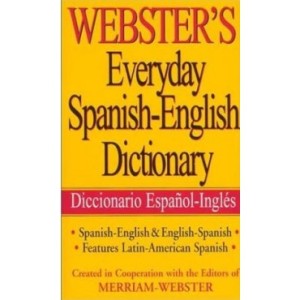 2. Keep an English/Spanish dictionary handy to use when you have a parent visiting or to give away to a parent or caregiver who needs it. It will show them that you’re making an effort to engage in their language of comfort.
2. Keep an English/Spanish dictionary handy to use when you have a parent visiting or to give away to a parent or caregiver who needs it. It will show them that you’re making an effort to engage in their language of comfort.
Webster’s Everyday Spanish-English Dictionary: http://www.fbmarketplace.org/websters-everyday-spanish-english-dictionary.html
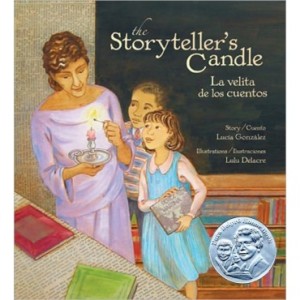 3. Learn about the children you serve and their heritage, and identify books that will affirm them. This Pura Belpré award winner is actually about Pura Belpré, the first Latina (Puerto Rican) to head a public library system.
3. Learn about the children you serve and their heritage, and identify books that will affirm them. This Pura Belpré award winner is actually about Pura Belpré, the first Latina (Puerto Rican) to head a public library system.
La Velita de los Cuentos: http://www.fbmarketplace.org/the-storytellers-candle-la-velita-de-los-cuentos.html
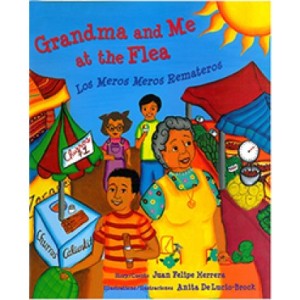 4. Share books that include some of the everyday experiences of the children and neighborhoods you serve, like this story highlighting the value of community and family.
4. Share books that include some of the everyday experiences of the children and neighborhoods you serve, like this story highlighting the value of community and family.
Grandma and Me at the Flea: http://www.fbmarketplace.org/grandma-and-me-at-the-flea-los-meros-meros-remateros.html
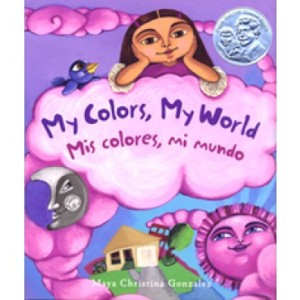 5. Bilingual books provide family members and caregivers the opportunity to read the same books their children are reading, but in their language of comfort. Families will love reading about all the colors of the rainbow in English and Spanish.
5. Bilingual books provide family members and caregivers the opportunity to read the same books their children are reading, but in their language of comfort. Families will love reading about all the colors of the rainbow in English and Spanish.
My Colors My World: http://www.fbmarketplace.org/my-colors-my-world-mis-colores-mi-mundo.html
Sign up with First Book to access these and other great titles on the First Book Marketplace.
Peggy McCloud, Ed. D. is Deputy Vice President of Education and Workforce Development at the National Council of La Raza (NCLR).
The post 5 Tips to Engage Latino Families and Students appeared first on First Book Blog.
Blog: First Book (Login to Add to MyJacketFlap)
JacketFlap tags: books, kids, Literacy, Books & Reading, Education, Teachers, First Book, Social Entrepreneurship, Huffington Post, Kyle Zimmer, Success Stories, The Very Hungry Caterpillar, social enterprise, #socent, Add a tag
This piece also appears on The Huffington Post’s Impact blog.
Steve White, a volunteer at a local nonprofit, worked through the holidays to ensure that 3,000 kids in need in Denver would have brand-new books of their own at Christmas.
Elisa Mayo, the finance coordinator for a school district in Mississippi, helped students at her Title I school get the books — and the encouragement — they needed to start book clubs, and now dozens of students, from third to fifth grade, voluntarily skip recess to meet and to talk about their new books.
A community group in Navajo County, Arizona was so determined to have a free library for local children that they raised money through bake sales, started with a donated room in a nearby gas station, and eventually came up with the funds to build a library.
These everyday heroes all have something in common. They are part of First Book, a nonprofit network of teachers, librarians, community leaders and program administrators serving kids in need — a network that stretches across the country and around the world.
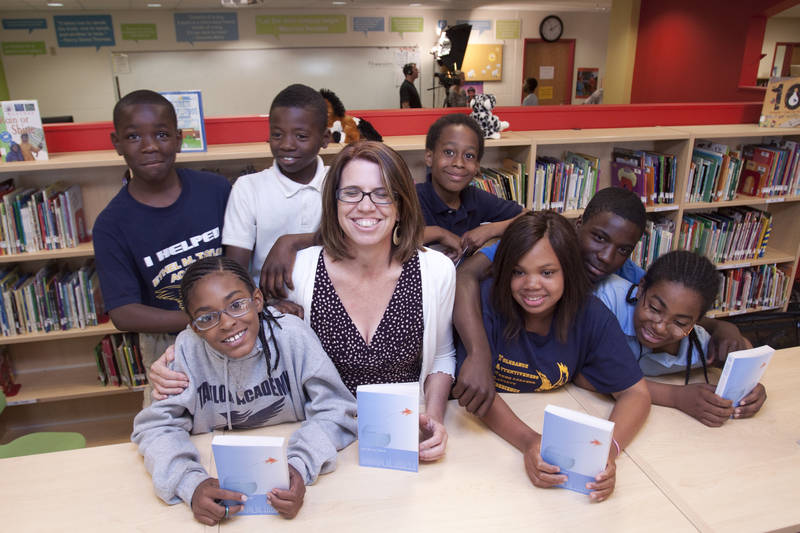
These men and women and thousands more like them are working every day to transform the lives of children from poor neighborhoods, and they know how desperate the need is. Kids from low-income families lack the resources that many of their middle and upper-class peers take for granted. Every study confirms the impact that has on their futures. One study that never fails to shock revealed that, while children in affluent neighborhoods had access to an average of 13 books a day, there is only a single age-appropriate book for every 300 children.
First Book is working to change that. We partner with the publishing industry to provide books — brand-new, high-quality books — to the teachers and program leaders who sign up with us. Our network is the fastest-growing group of educators in the country serving kids in need: we just reached the incredible milestone of 100,000 registered schools and programs.
Reaching that milestone is exciting, because that means that we’re reaching more children in need than ever.
But there’s another reason why bringing so many educators together matters.
By joining First Book, the people we serve are acknowledging something important: we have more power collectively than we do as individuals. It’s one of the most powerful ideas in human history, from the birth of cities to the workers’ unions that built the country to the marvelous online social networks that are transforming how we communicate.
We’ve already seen the impact this can have. For example, at one point, there was no bilingual edition (English and Spanish together) of the perennial children’s classic, The Very Hungry Caterpillar, but the educators we work with requested it repeatedly. Based on that feedback, we were able to go to the publisher and show that there was real demand. A bilingual edition rolled off the presses shortly thereafter, a book now available to all children and families.
This unprecedented network is also the source of valuable insight into the needs of those serving children at the base of the economic pyramid. There is no group of people whose voices are more critical to our collective future; what they have to say about the 30 million children living in low-income families in the United States and their futures is of paramount importance to us all.
Everyone at First Book is proud of our role in supporting this network. But we know there’s much, much more to be done. We estimate that there are 1.3 million educators and program leaders out there eligible to join us, and we’re doing everything we can to connect every single one.
The post The Collective Power of a Nation of Readers appeared first on First Book Blog.
Blog: Robin Brande (Login to Add to MyJacketFlap)
JacketFlap tags: TED talks, Videos That Make Us Happy, Advice for Teachers, Rita Pierson, Teaching Advice, Teaching, Inspiration, Teachers, Add a tag
Great talk for my teacher friends in the crowd–and for all of us who have had great teachers or just wished we had!
Blog: First Book (Login to Add to MyJacketFlap)
JacketFlap tags: Books & Reading, Video, First Book Events, Teachers, First Book Partners, Add a tag
“The biggest challenge our students face is the simple fact that they’ve been told they can’t do it. And so we charge them to have hope.”
- Jamelle Settles, Assistant Principle, Robert Burns Elementary School
First Book and our friends at JetBlue recently visited one of Michigan’s most struggling schools to provide students with brand new books. Check out the video below for the full story.
The post Delivering Hope to a School in Detroit (VIDEO) appeared first on First Book Blog.
Blog: Ellie McDoodle (Login to Add to MyJacketFlap)
JacketFlap tags: teachers, author visits, illustration, librarians, Add a tag
Michigan Reading Association held its 2014 conference this past weekend, and I got to do some presentations at it. At the huge general session on Sunday they unveiled the poster for next year's conference and -- ta-daaa! -- I helped create it.
Fellow Michigan author-illustrator and dear friend Matt Faulkner drew the MRA lettering scene and that gorgeous, intricate calligraphy of the words Honesty, Diversity, Unity, and Equality.
I did the Michigan readers pen/watercolor art and the layout.
These posters were distributed to teachers and librarians and will hang in schools around the state.
I've already seen a few in schools, actually.
This is a busy season for author visits-- I'll watch for more in my travels to schools around the state.
Pretty heady stuff!
Blog: I.N.K.: Interesting Non fiction for Kids (Login to Add to MyJacketFlap)
JacketFlap tags: librarians, teachers, Deborah Heiligman, Barbara Kerley, Add a tag
My sons went to a Quaker school, and every time they left meeting for worship they sang, As we leave this friendly place, and that's the song that's going through my head right now. I spent about half an hour trying to find a recording for you, but I can't.* I need a (Quaker) librarian to help me. (See below re librarians.)
I.N.K. has been a great place to hang around these past few years. I've learned so much from all of the other writers, from the teachers and librarians who've commented, and from writing my own posts.
So I thought I'd share with you some--no, not everything, of course--of what I've learned and give you some places to visit in the absence of I.N.K. Though I hope Linda will keep the blog up so people can dip into the archives.
1.Nobody knows kids like teachers. Stating the obvious, but I'm amazed by how much teachers know about children, about human nature, about different kinds of learning, about what works and what doesn't. One of my favorite blogs is There's A Book For That, written by a woman who must be one of the best teachers ever. Carrie Gelson teaches a class made up of 2nd, 3rd and 4th graders in Vancouver. She's a great fan of nonfiction, of books, and, clearly, of children. I kind of want to pretend I'm 9 and go sit in her class.
2.Nobody knows books and research like librarians. Soapbox time. Every time I visit a school I am bowled over by how much librarians know. Which book to put in which kids' hands. Better than any Amazon formula, "If you liked Those Rebels John and Tom, you will probably like A Home for Mr. Emerson and Handel, Who Knew What He Liked." Ditto independent booksellers!
And whenever I need research help, no amount of futzing around on the internet will be better than asking a librarian. One hour of futzing around on the internet is worth 270 seconds with a librarian. There's nobody like a librarian and there's nobody like Betsy Bird. Visit her blog Fuse8 whenever you can. You won't be sorry! And there are so many more. In fact, HERE is a compendium of the best librarian blogs!
3. Nobody knows writing like authors. Except when we're stalled or stuck or terrified. Then we go read what other authors have to say. I'm sort of addicted to the Paris Review interviews. If you go here you'll see Geoff Dyer saying all kinds of interesting things about nonfiction and how one can bend it and still have it be nonfiction! I've talked about John McPhee's interview before on I.N.K. in a piece I wrote about letting content dictate form. I intend to be addicted to the DRAFT column in the New York Times as soon as I'm done with my W.I.P. Check it out. It's a wealth of information--writers writing about writing.
4. There's nothing like having friends who do what you do. There are so many great authors on I.N.K. Great people. Having this blog has been like having a nation-wide support group. Teachers have the faculty room. Librarians have the water cooler. Writers can get lonely. Thanks to all you I.N.K. folks for hanging around the virtual coffee machine with me. Someone please pass the cookies. And while you're at it, please add to my list of what you've learned, and where we should hang out next.
*Ok, I found a recording. It's a real school singing it, and it's rough, but it brought a tear to my eye.
Here you go: As We Leave This Friendly Place.
Love,
Deb
Blog: 4EYESBOOKS (Login to Add to MyJacketFlap)
JacketFlap tags: Author, Children, book reviews, Reading, blog, Family, kids, writing, Children's literature, Amazon, parents, teachers, baby, kindle, bugs, Atlanta, preschool, Dr. Suess, The Bee Bully, anti bullying, Children and Young People, Add a tag
Today I had the privilege of being a reader at a local elementary school. I got to read one of my favorite books, The Bee Bully, and talk to the kids about being an author. The energetic kindergartners made me feel very welcome and I really enjoyed spending some time with them. We talked a little bit about what it means to be a bully and how important reading is.
Three reasons why reading is important to young children:
1). Reading exercises our brains. That’s right, our brains need a workout too. Reading strengthens brain connections and can even create new ones so pick up a book and help your brain exercise.
2). Reading improves concentration. Kids have to focus when they read which can sometimes be a difficult task. The more you read the longer you can extend that concentration time which will continue to improve.
3). Reading helps develop imagination. When you read your brain translates what is read to pictures. Did you know you can create a movie in your head while you read? We become engrossed in the story and we can connect with the characters. We can sympathize with how a character feels and reflect on how we would feel in that same situation.
Now go grab a book and BEE A READER!
Blog: Kid Lit Reviews (Login to Add to MyJacketFlap)
JacketFlap tags: picture book, students, teachers, 5stars, Benjamin Chaud, Library Donated Books, novelty book, school excuses, Middle Grade, Favorites, Chronicle Books, children's book reviews, Books for Boys, Davide Cali, Add a tag
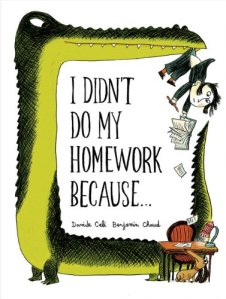 .
.
I Didn’t Do My Homework Because…
by Davide Cali & Benjamin Chaud
Chronicle Books 2014
978-1-4521-2551-0
Age 8 to 12 40 pages
.
Back Cover
“WHEN TO USE THIS BOOK: Whenever you haven’t finished your homework.
“CAUTION: Each excuse may only be used once.”
Opening
“So, why didn’t you do your homework?”
“I didn’t do my homework because . . . An airplane full of monkeys landed in our yard.”
The Story
A middle grade student has not finished his homework and must give his teacher an excuse. Why did he not have his homework? As you already know, an airplane full of monkeys landed in his yard. If that wasn’t enough, a rebellious robot destroyed his house. He barely got out with his books intact. Oh, the actual homework, you ask? Well, that is hard to complete when you have a bedroom full of recently escaped convicts hiding there. And then, anything he did get done was eaten by his dog, and it was eaten by another dog, so he spent the rest of the day at the vet’s office.
The teacher, being like most teachers, didn’t believe a syllable that this young student said. So he kept on trying. Who would not believe that some huge birds made a nest out of his house’s roof, and then the birds must have flown off with the roof, because now it is gone? “Okay, maybe that was much,” the middle grader would say, “but my brother was kidnapped by a circus and I was forced to watch him perform.” The teacher never did believe a word this poor, homeless, now only child had to say in his own defense.
Review
In I Didn’t Do My Homework Because . . . The young boy has some of the most inventive excuses I have ever heard. The true test is with teachers. How many of this young man’s excuses have been heard before, versus the number that are fresh and new? Only the latter excuses will matter to the average middle grade reader. Most excuses are only good once. There is some kind of underground network, where teachers file excuses for all other teachers to check their student’s excuse against, similar to how Grammarly helps teachers check for plagiarism. If your excuse is on this registry there is no chance it will work, even when it is true.

The illustrations detail the excuses with wonderful detail that will hold the attention of your mind’s eye. The author and illustrator worked together to make sure you could easily remember these excuses. If instructions would have been included they would have said, “Read it aloud and study the picture. The more senses you can involve the better you will remember. The illustrations depict the excuse as closely as possible with more than enough intimate features and qualities to ease the process. Sometimes silly illustrations are used to help you remember that excuse.”
If your brother were kidnapped by the circus, would you remember this better if you saw him leaning out of a huge cannon, and the ringmaster at the other end with a large match ready to shoot him into outer space? You bet it would. That picture will stay in your head—and the teacher’s—long after the she has forgotten about your missing homework.

Obviously, I Didn’t Do My Homework Because . . . is a humorous book depicting outrageous excuses one would never actual encounter. The book is cute, makes fun of the silly excuses kids can think up and teachers must hear. This is a not a real story, as one expects a story. Nor is this a handbook of excuses, because they are too outlandish to be believable, though sometimes truth is stranger than fiction. I Didn’t Do My Homework Because . . .is tongue-in-cheek fun middle graders will laugh at, as will younger kids—even those who cannot read. There might even be a few teachers laughing along. The book is a novelty-type book exaggerating the ritual of excuses for laughs and smiles. I Didn’t Do My Homework Because . . . easily accomplishes this goal.
If you like jokes, if you like comics, if you like silliness, or if you need more unbelievable excuses this year, I Didn’t Do My Homework Because . . . is for you. The book reminds me of the thin library jokes books or silly poetry books I’d carry home by the arm loads. This light reading never needed to be dog eared—or cat whiskered—before closing the book unfinished. These books, and I Didn’t Do My Homework Because . . . are thin enough to find your place or start over and get to the last page read in minutes. The entire book will take no more than fifteen minutes to read cover-to-cover. Every time I read those books a smile jumped onto my face. I Didn’t Do My Homework Because . . . did the same, with a few BIG laughs.

A smile can change one’s entire attitude for the better. I Didn’t Do My Homework Because . . . will have kids giggling, parent’s grinning, and teachers groaning, but all will smile that magic transformative smile, the kind that instantly makes you feel good, as smiles are meant to do. If you want that smile of innocent complicity, this is the book to read. Keep it in your locker or desk drawer for quick reference or a needed smile. Most importantly, remember to check off each excuse as you use them. Beware of the teacher underground, .I Didn’t Do My Homework Because . . . is not guaranteed to get you out of doing your homework.
.
Learn more about I Didn’t Do My Homework Because . . . HERE. And on iTunes.
Get copy of I Didn’t Do My Homework Because . . . at Amazon—B&N—Chronicle Books—your local neighborhood bookstore.
.
Meet the author, Davide Cali: wiki facebook twitter goodreads
Meet the illustrator, Benjamin Chaud blog facebook pinterest vimeo ficker goodreads
Find more interesting Chronicle Books website blog facebook twitter pinterest instagram G+ youtube tumblr
.
I DIDN’T DO MY HOMEWORK BECAUSE . . . . Text copyright © 2014 by Davide Cali. Illustrations copyright © 2014 by Benjamin Chaud. Reproduced by permission of the publisher, Chronicle Books, San Francisco, CA.
ALSO BY BENJAMIN CHAUD.
 .
.
.

Filed under: 5stars, Books for Boys, Favorites, Library Donated Books, Middle Grade Tagged: Benjamin Chaud, books for boys, children's book reviews, Chronicle Books, Davide Cali, novelty book, picture book, school excuses, students, teachers
Blog: the pageturn (Login to Add to MyJacketFlap)
JacketFlap tags: Authors, teachers, Add a tag

Romily Bernard’s Debut, Find Me
I hated school. This probably isn’t something I should admit, but it’s true. For me, school was hours and hours of stuff I had no interest in learning, shoulder to shoulder with people I didn’t like. In my classmates’ defense, they didn’t like me either. I was smaller, younger, and had zero filter on my mouth.
For those of you playing along at home, that’s math even I can do. Smart mouth and bigger classmates equal Romily being stuffed into lockers twice and tossed into a Dumpster once. Eventually I learned how to outrun them, but not before I had to spend an entire afternoon smelling like dead pizza so, yeah, school wasn’t great.
But Mrs. King was. I had her for World History and our relationship started favorably (at least in my mind) because she put me at the back of the room. This was a great development because most teachers liked to put me in between problem students. Basically, I was supposed to play Switzerland and, let’s be honest, I don’t have the temperament for that.
Anyway, just like our other history teachers, Mrs. King started the semester in ancient Mesopotamia and ended us in modern Europe, but it was the way she taught us the events that really sticks with me. We didn’t just learn there was a girl called Joan of Arc, we learned why and how she might have happened. It wasn’t just that there was an ancient Chinese general called Yuan Chonghuan, it was more about how his life would have possibly shaped him.
For a writer, this was invaluable. She was essentially teaching character motivation, but, honestly, she was also teaching empathy. People are products of their environments and experiences and it’s not always pretty. I’ve thought about that a lot over the years. I may not remember specific battles from World War II, but I do remember to think about what someone else might be going through, which is probably one of the best lessons of all.
Romily Bernard is a debut author who graduated in Literature and Spanish from Georgia State University. She lives with her partner in Atlanta, riding horses and working in corporate law. FIND ME was a finalist in the 2012 Golden Heart Awards and placed first in the 2011 YA Unpublished Maggie Awards (given by Georgia Romace Writers).
Add a CommentBlog: First Book (Login to Add to MyJacketFlap)
JacketFlap tags: Celebrity Guest Bloggers, David J Johns, Literacy, Books & Reading, Education, Teachers, African American, First Book Partners, Add a tag
Welcome to First Book’s celebrity blog series. Each month we will be connecting with a powerful voice in education and hearing their suggestions for books to use in the classroom, all of which are available on the First Book Marketplace.
This month we hear from David J. Johns, Executive Director of the White House Initiative on Educational Excellence for African Americans, on the importance of literacy among African American youth.
 A love of reading is crucial for increasing achievement among African American students and, consequently, for closing persistent achievement and opportunity gaps. Any student who picks up a book is exposed to adventures, life experiences, and characters that help cultivate voice and agency, and contribute to developing a strong sense of self. Since many students depend on books as their primary method of learning beyond the confines of the classroom, African American children are uniquely challenged when the majority of characters in the literature available to them do not affirm their experience, identity or culture.
A love of reading is crucial for increasing achievement among African American students and, consequently, for closing persistent achievement and opportunity gaps. Any student who picks up a book is exposed to adventures, life experiences, and characters that help cultivate voice and agency, and contribute to developing a strong sense of self. Since many students depend on books as their primary method of learning beyond the confines of the classroom, African American children are uniquely challenged when the majority of characters in the literature available to them do not affirm their experience, identity or culture.
The availability of texts reflective of the interests and experiences of African American students, schools and communities is critical – powerful books, such as Frederick Douglass’ Narrative of the Life of Frederick Douglass, an American Slave and Richard Wright’s Native Son. These books depict African American boys leveraging skills cultivated from their life experiences to negotiate racial, class, and historical tensions. The need to negotiate these tensions continues to this day and these lessons apply regardless of the child’s family wealth, home language, zip code, identity, expression, race or gender. Both Frederick Douglass, as he reflects upon his experiences in the autobiography, and Bigger Thomas, Wright’s protagonist, are examples of resilient and intelligent young boys who struggle to learn, grow, and pursue a better life.
Strong female protagonists, like Cassie Logan from Mildred D. Taylor’s The Road to Memphis and Pecola Breedlove from Toni Morrison’s The Bluest Eye support young women in developing a strong sense of agency as well as the strength to persist in pursuing post-secondary opportunities. These books can also help young men understand how to relate to, and engage with, strong women. The poetry collection In Daddy’s Arms I am Tall celebrates fatherhood and promotes the importance of family in a way that all children can relate to. The stories and images in this important text disrupt and supplant negative stereotypes about absent fathers, reminding us of the tremendous opportunities male mentors and engaged fathers provide.
Additionally, reading about characters who are disabled, children of veterans, English language learners, children who are lesbian, gay, bisexual, transgender or questioning, can help all students mature, develop empathy, awareness, and appreciation for diversity. In Go Tell It on the Mountain, James Baldwin describes the experiences of his protagonist, John, in ways that enable readers from all backgrounds to grow in their understanding of the challenges faced by their peers—at home, in school or at church. The book is a powerful lesson of the role that faith and family play in supporting young people through adversity and is a seminal text for all students searching to find their voice.
Literacy is essential. Individuals without the skills to read or fully comprehend written text or without access to written text at all (including books and other materials that are inclusive, diverse, and affirming) are constrained in their ability to engage in our global society. For these reasons, The White House Initiative on Educational Excellence for African Americans supports efforts to increase literacy and encourage diversity within the publishing industry.
By David J. Johns, Executive Director, White House Initiative on Educational Excellence for African Americans. The Initiative contributes to closing the achievement gap for African American students. For additional information on ways to support African American educational excellence, please visit http://www.ed.gov/AfAmEducation and follow the initiative on Twitter at @AfAmEducation.
Recommended Books:

The post David J. Johns: The Importance of Literacy Among African American Youth appeared first on First Book Blog.
Blog: First Book (Login to Add to MyJacketFlap)
JacketFlap tags: Literacy, Books & Reading, Marketplace, Education, Authors & Illustrators, Book Recipients, Teachers, Add a tag
Today is National Family Literacy Day, created by our friends at the National Center for Families Learning (NCFL) to celebrate families who are improving their lives through continued learning.
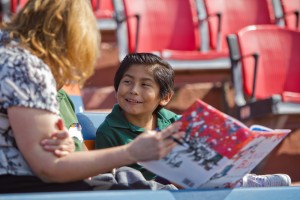 This issue is an important one for the classrooms and community programs that First Book serves. We recently asked hundreds of educators who recently joined the First Book network about the biggest challenges they face, and parent engagement was at the top of the list.
This issue is an important one for the classrooms and community programs that First Book serves. We recently asked hundreds of educators who recently joined the First Book network about the biggest challenges they face, and parent engagement was at the top of the list.
If you work with kids in need — at a school, community program or local nonprofit — you can sign up with First Book to get new books. And, in honor of National Family Literacy Day, here’s a few ideas for how you can use First Book to encourage reading at home:
- Go beyond books. First Book carries over 5,000 great titles on the First Book Marketplace, our online store. You can pair these books with activities to make reading a family activity. For example, the National PTA’s Family Reading Experience, Powered by Kindle, is a set of free activities — in English and Spanish — that engage the entire family and focus on improving the reading skills of children between kindergarten and fifth grade.
- Use books as incentives. The educators we work with use a lot of methods to involved parents in their children’s education, from parent-teacher conferences to family reading nights to reading breakfasts. First Book can help you get free books to give away at these events to help families build home libraries.
- Help parents with tips. Not every parent feels able to help their child become a stronger reader, but there are tools and resources out there that can help. Our friends at Reading Rockets have some amazing free tips (in 10+ languages) for parents, grandparents and other caring adults about how they can read with the children in their lives. First Book’s Mind In the Making section also includes tip sheets for how to read those books with kids.
- Start a family literacy program. Designate a corner of your school library or community center as a family reading space. When kids bring a caring adult in to read with them, invite them to take a book home to keep, or invite parents into your school or program to read their favorite book with your students.
The post Four Ways to Engage Parents and Families in Reading Time appeared first on First Book Blog.
Blog: First Book (Login to Add to MyJacketFlap)
JacketFlap tags: First Book, Anti-Bullying, Literacy, Book lists, Books & Reading, Marketplace, Education, Teachers, books, reading, Add a tag
Bullying continues to be an ongoing issue among peers and students, especially at schools. October is National Bullying Prevention Month so we’ve put together a list of 10 anti-bullying books that can help raise awareness of this critical concern throughout classrooms.
 Wonder – R. J. Palacio
Wonder – R. J. Palacio
In a world where bullying among young people is an epidemic, this is a refreshing new narrative full of heart and hope. R.J. Palacio has called her debut novel “a meditation on kindness” – indeed, every reader will come away with a greater appreciation for the simple courage of friendship. Auggie is a hero to root for, a diamond in the rough who proves that you can’t blend in when you were born to stand out.
 Skin I’m In – Sharon G. Flake
Skin I’m In – Sharon G. Flake
Maleeka suffers every day from the taunts of the other kids in her class. If they’re not getting at her about her homemade clothes or her good grades, it’s about her dark, black skin. When a new teacher, whose face is blotched with a startling white patch, starts at their school, Maleeka can see there is bound to be trouble for her too. But the new teacher’s attitude surprises Maleeka. Miss Saunders loves the skin she’s in. Can Maleeka learn to do the same?
 Because Of Mr. Terupt - Rob Buyea
Because Of Mr. Terupt - Rob Buyea
It’s the start of fifth grade for seven kids at Snow Hill School. There’s…Jessica, the new girl, smart and perceptive, who’s having a hard time fitting in; Alexia, a bully, your friend one second, your enemy the next; Peter, class prankster and troublemaker; Luke, the brain; Danielle, who never stands up for herself; shy Anna, whose home situation makes her an outcast; and Jeffrey, who hates school.
 Dear Bully: Seventy Authors Tell Their Stories - Megan Kelley Hall
Dear Bully: Seventy Authors Tell Their Stories - Megan Kelley Hall
Discover how Lauren Kate transformed the feeling of that one mean girl getting under her skin into her first novel, how Lauren Oliver learned to celebrate ambiguity in her classmates and in herself, and how R.L. Stine turned being the “funny guy” into the best defense against the bullies in his class.
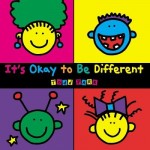 It’s Okay To Be Different – Todd Parr
It’s Okay To Be Different – Todd Parr
It’s Okay to Be Different cleverly delivers the important messages of acceptance, understanding, and confidence in an accessible, child-friendly format featuring Todd Parr’s trademark bold, bright colors and silly scenes. Targeted to young children first beginning to read, this book will inspire kids to celebrate their individuality through acceptance of others and self-confidence.
 Stargirl - Jerry Spinelli
Stargirl - Jerry Spinelli
Stargirl. From the day she arrives at quiet Mica High in a burst of color and sound, the hallways hum with the murmur of “Stargirl, Stargirl.” She captures Leo Borlock’s heart with just one smile. She sparks a school-spirit revolution with just one cheer. The students of Mica High are enchanted. At first. Then they turn on her.
 Absolute Brightness - James Lecesne
Absolute Brightness - James Lecesne
Darkness: Where light is not. Light: Brightness or illumination from a particular source. Absolute brightness: The mystery of Leonard Pelkey. This is the story of a luminous force of nature: a boy who encounters evil and whose magic isn’t truly felt until he disappears.
 Thirteen Reasons Why - Jay Asher
Thirteen Reasons Why - Jay Asher
Clay Jensen returns home from school to find a mysterious box with his name on it lying on his porch. Inside he discovers cassette tapes recorded by Hannah Baker–his classmate and crush–who committed suicide two weeks earlier. On tape, Hannah explains that there are thirteen reasons why she decided to end her life. Clay is one of them. If he listens, he’ll find out how he made the list.
 The Bully – Paul Langan
The Bully – Paul Langan
A new life. A new school. A new bully. That’s what Darrell Mercer faces when he and his mother move from Philadelphia to California. After spending months living in fear, Darrell is faced with a big decision. He can either keep on running from this bully or find some way to fight back.
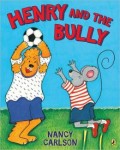 Henry and the Bully - Nancy Carlson
Henry and the Bully - Nancy Carlson
The lovable Henry is back–and he’s being bullied on the soccer field at school! When no one’s advice seems to help, it’s up to Henry to solve his bully problem for himself. Classroom favorite Nancy Carlson encourages young readers to use creativity and empathy to deal with one of childhood’s toughest challenges.
Educators and program leaders can find these books and more in our anti-bullying category on the First Book Marketplace.
The post Stand Up to Bullying with These 10 Kids Books appeared first on First Book Blog.
Blog: First Book (Login to Add to MyJacketFlap)
JacketFlap tags: Book Distributions, Marketplace, Book Recipients, Teachers, Volunteers, Dayton, National Book Bank, donated books, free books, First Book, Ohio, First Book Marketplace, First Book National Book Bank, Add a tag
I have been signed up with First Book for several years. I teach kindergarten and first grade at Dayton Public Schools in the poverty-stricken inner city of Dayton, Ohio. I get plenty of emails from First Book, but have never received one book. Most books seem to be located in a warehouse in a large metropolitan area. You would have to drive a truck through states to get there.
– Mary Reed
Dayton Public Schools
Hi Mary,
It sounds like you signed up with First Book to get new books for your students, but we haven’t been able to help you make that happen yet. Let’s fix that.
There are actually two different ways you can get books from First Book.
The First Book Marketplace: Over 5,000 popular and award-winning titles, from board books to college prep, available exclusively to educators serving kids in need. This channel is great for teachers like you, who often need specific titles for their students.
The First Book National Book Bank: The nation’s only clearinghouse for large-scale book donations from publishers. These brand-new books are available free of charge (plus a shipping & handling fee), in carton quantities, and are perfect for educators or program leaders who want to help children start home libraries of their own.
Books from the The First Book Marketplace are available 24 hours a day, while books from the The First Book National Book Bank are available as new donations come in, usually once a month.
When we receive new books from publishers for the National Book Bank, they’re sent to a (borrowed) warehouse and we ship them out to everyone who requested books. We try to hold these local book distributions in different cities around the country, which helps people who can’t afford even the shipping charges.
But you don’t have to wait until there’s a book distribution near you. Once you’re sign up with First Book, you’re eligible for free books from every single distribution, whether the warehouse is in San Diego or Boston.
So the next time you get an email letting you know about a book distribution, check out the title list and let us know which books your kids will love and we’ll do everything we can to help you get them.
And we’ll put Dayton on our list of cities to visit someday soon.
Thanks for writing!
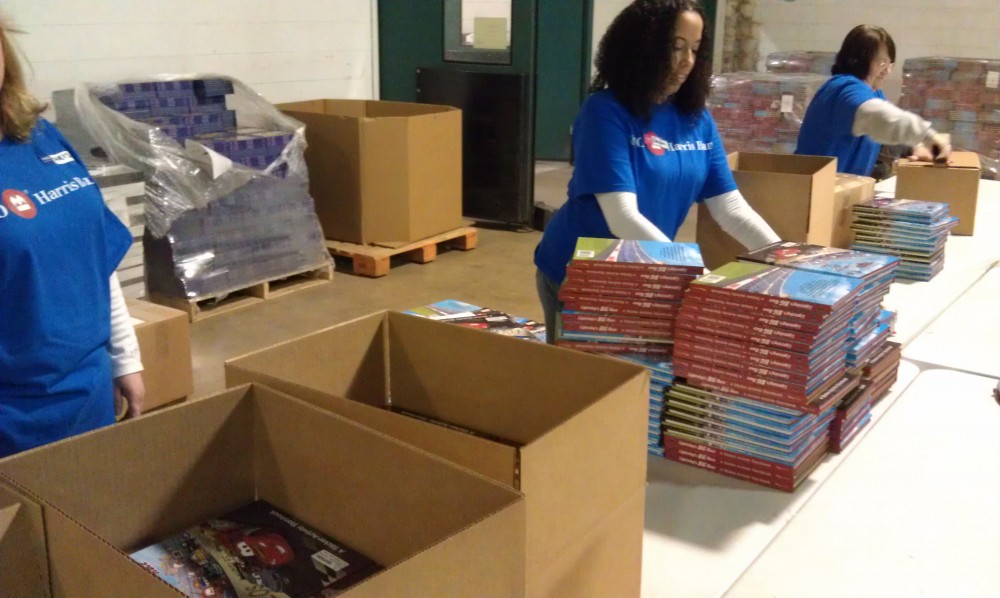
The post We’re Coming to Your Town Someday… But It Doesn’t Matter appeared first on First Book Blog.
Blog: First Book (Login to Add to MyJacketFlap)
JacketFlap tags: Books & Reading, Marketplace, Education, Authors & Illustrators, Teachers, First Book, Guest Blog Posts, First Book Marketplace, Ellen Galinsky, Mind in the Making, First Book Partners, Families and Work Institute, Catherine Snow, executive function skills, Jack Shonkoff, Add a tag
The following is a guest blog post by Ellen Galinsky, president of the Families and Work Institute and author of ‘Mind in the Making’. This post also appears today on The Huffington Post.
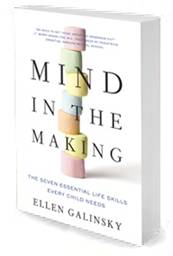 For a long time, we’ve been told, “read to children!” As important as this message is, it has frustrated me. It’s not JUST reading to children that matters; it is HOW we read to children that has benefits for us and for them.
For a long time, we’ve been told, “read to children!” As important as this message is, it has frustrated me. It’s not JUST reading to children that matters; it is HOW we read to children that has benefits for us and for them.
This may sound like a guilt-trip, but it’s not! There are simple ways to read to children that make it more fun for us and for children and that promote their learning even better. These don’t cost money or take lots of time. I certainly know from my research on work and family life that time is something we all feel starved for.
So what do I mean?
One of the enduring findings from child development research is the importance of what researchers such as Jack Shonkoff of Harvard call “serve and return”. This involves a back and forth interaction between you and your child. Like a game of ball: One of you says or does something (serves) and the other responds (returns). It is important to listen and then to build on and extend what your child says or does and to keep this going for as long as your child is interested.
 Here is an example. While reading the book Head, Shoulders, Knees, and Toes…(based on the song) to your child, you can point to your head and say: “Here’s my head. Where’s your head?” Then point to the child’s head: “There’s your head!” Wait for your child’s response and respond back. That is the essence of serve and return. It doesn’t matter if you don’t finish the book–having the conversation is what counts.
Here is an example. While reading the book Head, Shoulders, Knees, and Toes…(based on the song) to your child, you can point to your head and say: “Here’s my head. Where’s your head?” Then point to the child’s head: “There’s your head!” Wait for your child’s response and respond back. That is the essence of serve and return. It doesn’t matter if you don’t finish the book–having the conversation is what counts.
As Catherine Snow of Harvard says:
The book creates a platform on which the conversation takes place. [The adult is there to] interpret, to name the pictures, to describe the action, to explain what’s going on. This is one of the reasons why research shows that families in which children are read to regularly are families whose children are more likely to arrive at school ready to learn, with bigger vocabularies and a greater capacity to participate effectively in classrooms. [It's] because they’ve had this kind of focused conversation with adults.
Another important finding from child development research is the importance of promoting executive function life skills. And that sounds like a mouthful too, but it isn’t. These are skills that emerge along a developmental timetable in children. However, they emerge often unnoticed, and as such are typically not consciously promoted, but when they are, children are more likely to thrive in the short- and long-term. That’s why I call them life skills.
All of these life skills are based, in one way or another, in the prefrontal cortex of the brain and we use them to “manage” our attention, our emotions and our behavior in order to reach our goals. So they are executive function life skills.
As Adele Diamond of the University of British Columbia says:
If you look at what predicts how well children will do later in school, more and more evidence is showing that executive functions … actually predict success better than IQ tests.
Here is an example, using the book, Elmo Says, based on the game Simon Says. This book promotes the executive function life skill of Focus and Self Control. Focus and Self Control includes being able to remember rules. It also includes the ability to not just make a quick response, but also to pause and choose a response. Playing games and reading books that require children to remember 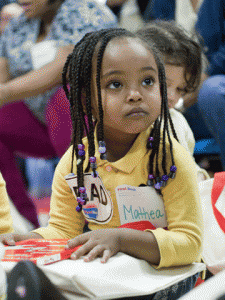 and not go on automatic, but to exercise self control, are what promotes executive functions. You can play the game as you read the book with your child. Like the game of Simon Says, your child is not supposed to follow the directions unless the book states: “Elmo says!”
and not go on automatic, but to exercise self control, are what promotes executive functions. You can play the game as you read the book with your child. Like the game of Simon Says, your child is not supposed to follow the directions unless the book states: “Elmo says!”
My years of research into executive function skills and the critical impact they have on young children led me to create the book Mind in the Making, a set of seven essential life skills that every child needs. And what better time to promote those skills in children than when you’re sitting down reading with them?
In order to make this a reality, especially for low-income children, I’ve been collaborating with First Book — a nonprofit social enterprise that provides new books and educational materials to children in need — to translate this understanding of why HOW we read to children makes the biggest difference. We’ve put together collections of beloved, iconic children’s books as well as new books that are sure to become classics- for multiple age ranges – that teach these valuable lessons. For programs serving low-income children, these books are available at a very low cost on the First Book Marketplace, an online store available exclusively to classrooms and programs serving children from low-income families.
We’ve also created a set of support tips: simple games and techniques for each book that a parent or educator can use to reinforce one of the seven essential skills. These are freely available for everyone on the Mind in the Making website, and anyone ordering any of the titles through the First Book Marketplace will receive them automatically.
By reaching more educators, clinics, and community programs with the message of teaching life skills early on, we’re helping to ensure that all children find success in the classroom, the workplace and life.
The post Ellen Galinsky: Reading Time’s a Missed Opportunity for Life-Skills Learning appeared first on First Book Blog.
Blog: First Book (Login to Add to MyJacketFlap)
JacketFlap tags: Books & Reading, Marketplace, Education, Authors & Illustrators, Teachers, First Book, Guest Blog Posts, First Book Marketplace, Ellen Galinsky, Mind in the Making, First Book Partners, Families and Work Institute, Catherine Snow, executive function skills, Jack Shonkoff, Add a tag
The following is a guest blog post by Ellen Galinsky, president of the Families and Work Institute and author of ‘Mind in the Making‘. First Book and Mind in The Making have partnered to bring you book lists and tip sheets for seizing the opportunities for life skills learning available in reading time with your children.
This post also appears today on The Huffington Post.
 For a long time, we’ve been told, “read to children!” As important as this message is, it has frustrated me. It’s not JUST reading to children that matters; it is HOW we read to children that has benefits for us and for them.
For a long time, we’ve been told, “read to children!” As important as this message is, it has frustrated me. It’s not JUST reading to children that matters; it is HOW we read to children that has benefits for us and for them.
This may sound like a guilt-trip, but it’s not! There are simple ways to read to children that make it more fun for us and for children and that promote their learning even better. These don’t cost money or take lots of time. I certainly know from my research on work and family life that time is something we all feel starved for.
So what do I mean?
One of the enduring findings from child development research is the importance of what researchers such as Jack Shonkoff of Harvard call “serve and return”. This involves a back and forth interaction between you and your child. Like a game of ball: One of you says or does something (serves) and the other responds (returns). It is important to listen and then to build on and extend what your child says or does and to keep this going for as long as your child is interested.
 Here is an example. While reading the book Head, Shoulders, Knees, and Toes…(based on the song) to your child, you can point to your head and say: “Here’s my head. Where’s your head?” Then point to the child’s head: “There’s your head!” Wait for your child’s response and respond back. That is the essence of serve and return. It doesn’t matter if you don’t finish the book–having the conversation is what counts.
Here is an example. While reading the book Head, Shoulders, Knees, and Toes…(based on the song) to your child, you can point to your head and say: “Here’s my head. Where’s your head?” Then point to the child’s head: “There’s your head!” Wait for your child’s response and respond back. That is the essence of serve and return. It doesn’t matter if you don’t finish the book–having the conversation is what counts.
As Catherine Snow of Harvard says:
The book creates a platform on which the conversation takes place. [The adult is there to] interpret, to name the pictures, to describe the action, to explain what’s going on. This is one of the reasons why research shows that families in which children are read to regularly are families whose children are more likely to arrive at school ready to learn, with bigger vocabularies and a greater capacity to participate effectively in classrooms. [It's] because they’ve had this kind of focused conversation with adults.
Another important finding from child development research is the importance of promoting executive function life skills. And that sounds like a mouthful too, but it isn’t. These are skills that emerge along a developmental timetable in children. However, they emerge often unnoticed, and as such are typically not consciously promoted, but when they are, children are more likely to thrive in the short- and long-term. That’s why I call them life skills.
All of these life skills are based, in one way or another, in the prefrontal cortex of the brain and we use them to “manage” our attention, our emotions and our behavior in order to reach our goals. So they are executive function life skills.
As Adele Diamond of the University of British Columbia says:
If you look at what predicts how well children will do later in school, more and more evidence is showing that executive functions … actually predict success better than IQ tests.
Here is an example, using the book, Elmo Says, based on the game Simon Says. This book promotes the executive function life skill of Focus and Self Control. Focus and Self Control includes being able to remember rules. It also includes the ability to not just make a quick response, but also to pause and choose a response. Playing games and reading books that require children to remember  and not go on automatic, but to exercise self control, are what promotes executive functions. You can play the game as you read the book with your child. Like the game of Simon Says, your child is not supposed to follow the directions unless the book states: “Elmo says!”
and not go on automatic, but to exercise self control, are what promotes executive functions. You can play the game as you read the book with your child. Like the game of Simon Says, your child is not supposed to follow the directions unless the book states: “Elmo says!”
My years of research into executive function skills and the critical impact they have on young children led me to create the book Mind in the Making, a set of seven essential life skills that every child needs. And what better time to promote those skills in children than when you’re sitting down reading with them?
In order to make this a reality, especially for low-income children, I’ve been collaborating with First Book — a nonprofit social enterprise that provides new books and educational materials to children in need — to translate this understanding of why HOW we read to children makes the biggest difference. We’ve put together collections of beloved, iconic children’s books as well as new books that are sure to become classics- for multiple age ranges – that teach these valuable lessons. For programs serving low-income children, these books are available at a very low cost on the First Book Marketplace, an online store available exclusively to classrooms and programs serving children from low-income families.
We’ve also created a set of support tips: simple games and techniques for each book that a parent or educator can use to reinforce one of the seven essential skills. These are freely available for everyone on the Mind in the Making website, and anyone ordering any of the titles through the First Book Marketplace will receive them automatically.
By reaching more educators, clinics, and community programs with the message of teaching life skills early on, we’re helping to ensure that all children find success in the classroom, the workplace and life.
The post First Book and Mind in The Making’s Ellen Galinsky: Reading Time as a Missed Opportunity for Life-Skills Learning appeared first on First Book Blog.
Blog: First Book (Login to Add to MyJacketFlap)
JacketFlap tags: books, teachers, Back to School, I Believe, teachers respond, Books & Reading, Add a tag

In honor of back to school, we have been posting some rather stunning statistics about how many teachers spend money out of their own pockets for their classroom, as well as how much they are spending. Teachers across the web have responded.
- “Yup on average about $500” (twitter)
- “$480? Really? WAY more than that. I think I have spent that this month alone.” (facebook)
- “The government gives us a $250 tax break. The rest is all us” (twitter)
- “That $480 figure people throw around makes me LOL. I spend at least $1000 a year on books, paper, etc.” (twitter)
- “Oh please don’t post how much we spend! My husband doesn’t need to know this!” (facebook)
- “Sometimes it’s even more for many teachers…” (facebook)
These responses have come from teachers registered with First Book as well as those who are not. For those who are, First Book helps cover the cost of books to help teachers get more and pay less.
But we can’t do this without you. Every $10 you provide puts 4 books into the hands of a teacher for her classroom. Donate now for back to school!
The post Teachers Spend $480 Or More on Back To School Supplies for Their Classrooms appeared first on First Book Blog.
View Next 25 Posts


















